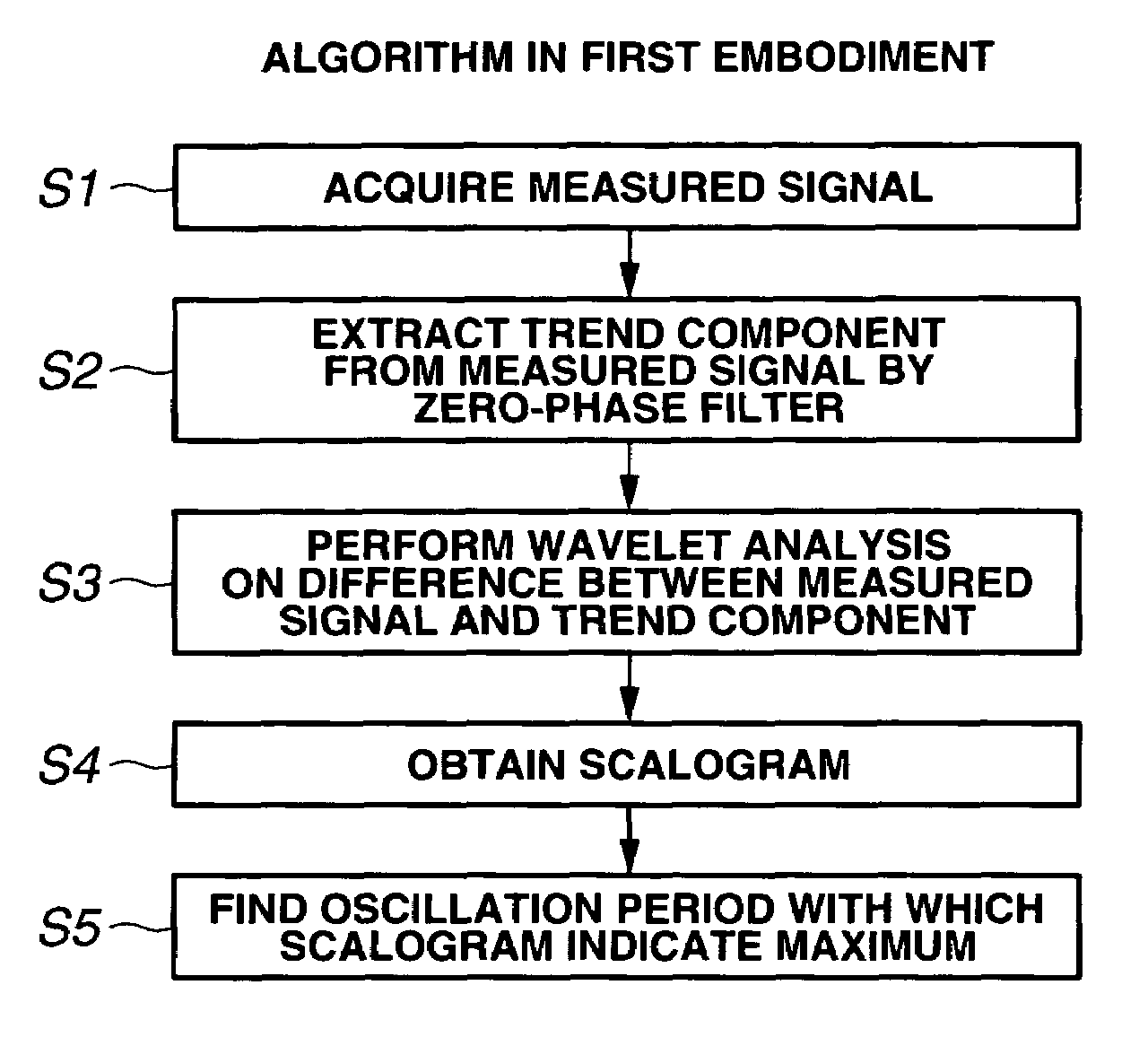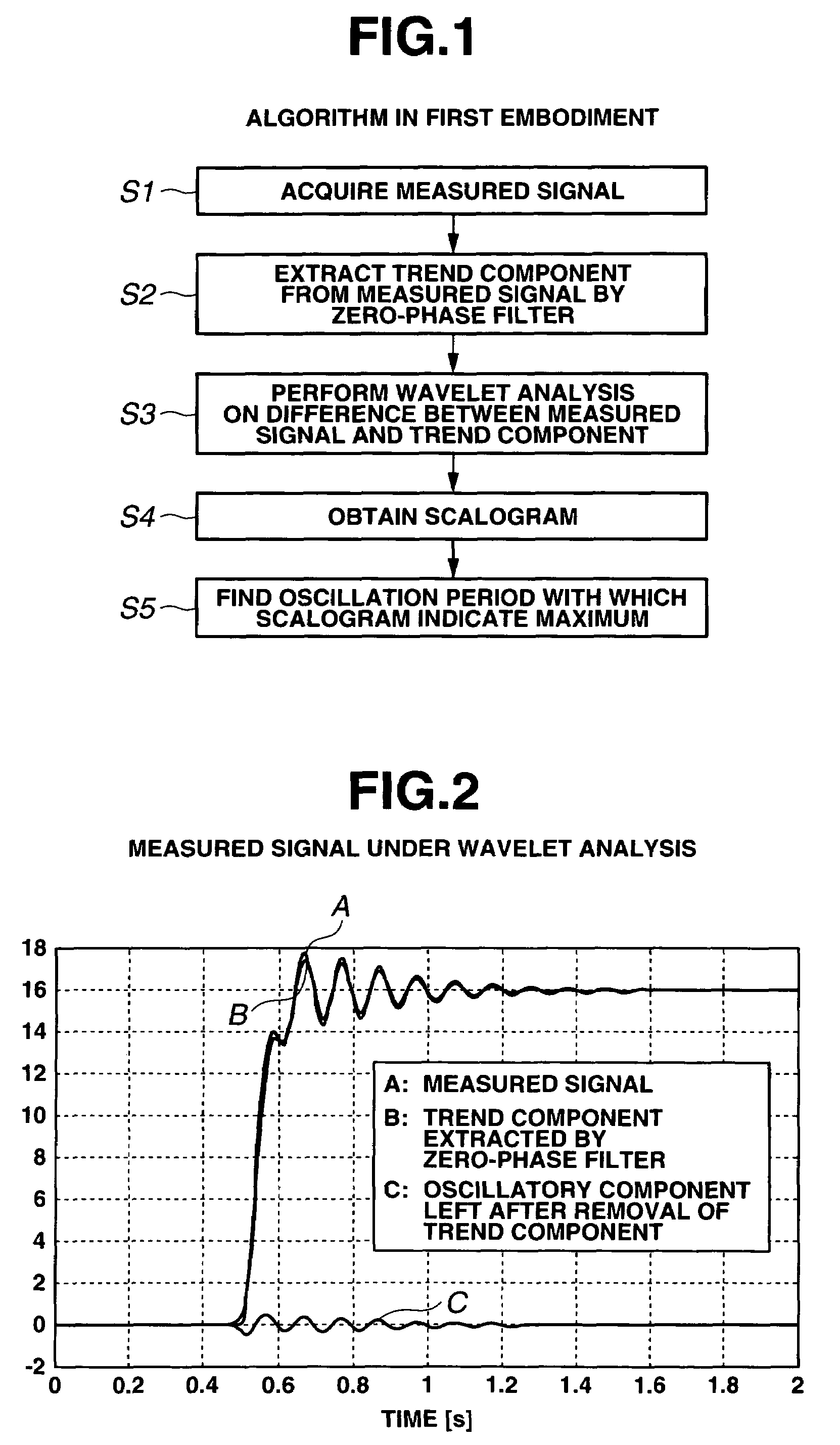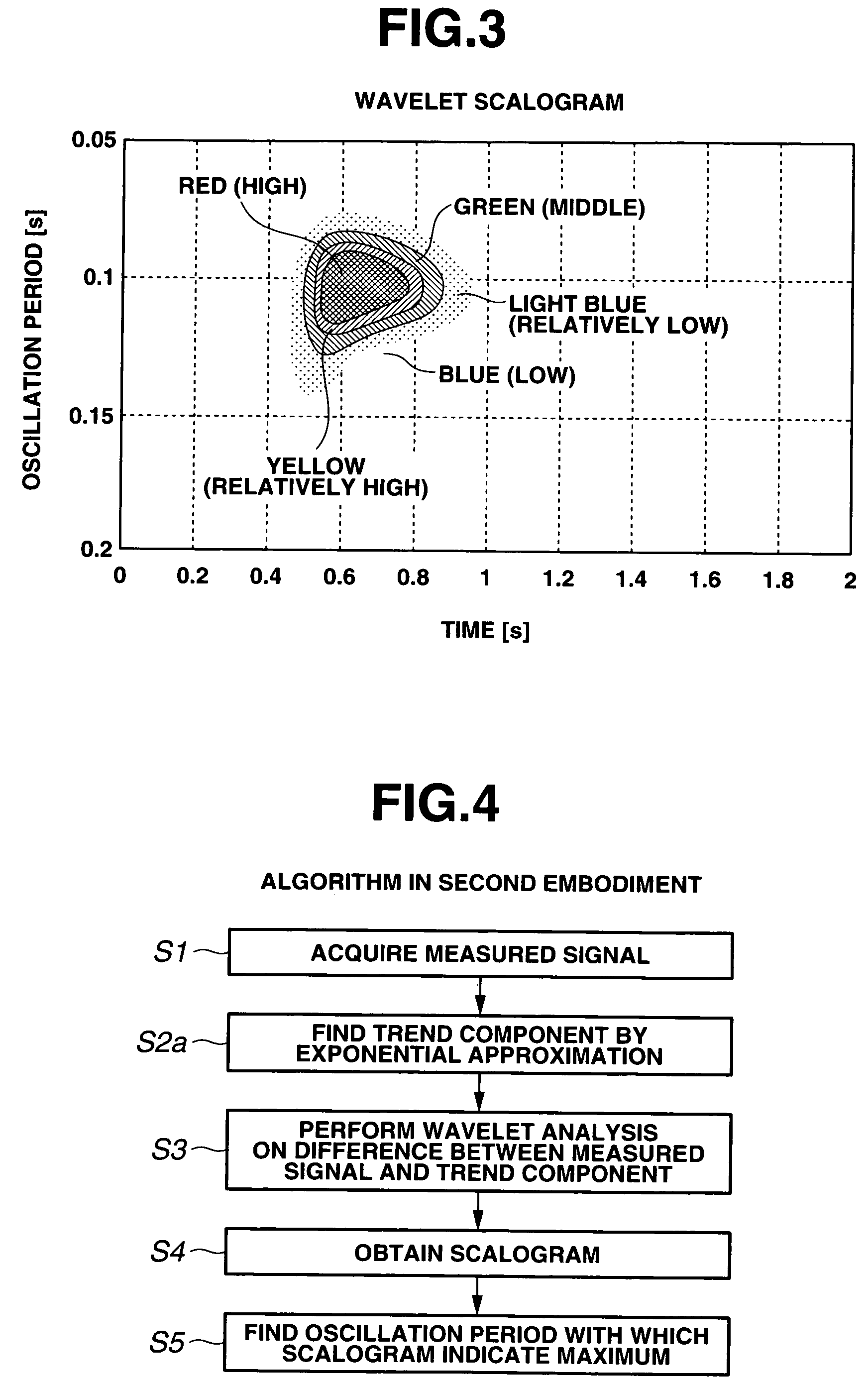Method for analyzing signal waveform and analyzing vehicle dynamic characteristic
a signal waveform and vehicle technology, applied in the direction of resistance/reactance/impedence, testing circuits, instruments, etc., can solve the problems of difficult to detect the 10 hz component correctly, difficult to extract accurate frequency of oscillatory components of signals,
- Summary
- Abstract
- Description
- Claims
- Application Information
AI Technical Summary
Benefits of technology
Problems solved by technology
Method used
Image
Examples
first embodiment
[0050]FIG. 1 is a flow chart showing an algorithm in accordance with a first embodiment of the present invention. As shown in FIG. 1, the algorithm comprises Steps S1 to S5 to be executed in sequence. Step S1 is to acquire and record a measured signal on a piece of recording media, such as a data recorder. Step S2 is to extract a trend component from the measured signal using a zero-phase filter. The zero-phase filter serves to extract a trend component without phase delay. Step S3 is to extract an oscillatory component from the measured signal, that is, to determine the difference between the trend component and the measured signal, and to perform a wavelet analysis on this oscillatory component. Step S4 is to obtain a wavelet scalogram of the oscillatory component of the measured signal. Step S5 is to find an oscillation period with which the wavelet scalogram indicates a global maximum.
[0051]FIG. 2 shows how a trend component is extracted from a measured signal at Step S2. In FIG...
second embodiment
[0054]FIG. 4 is a flow chart showing an algorithm in accordance with a second embodiment of the present invention. As shown in FIG. 4, the algorithm comprises Steps S1 to S5 to be executed in sequence. The analysis method of the second embodiment differs from that of the first embodiment in that Step S2a is provided to find a trend component by exponential approximation. In the case of an automatic transmission vehicle, a shift operation of the automatic transmission may generate an acceleration signal waveform as shown in FIG. 5B. In FIG. 5B, when an accelerator opening signal occurs at time t0, the acceleration signal rises at time t1 with a certain delay, fluctuates around a value G1 after time t1, and rises toward a value G2 at time t2. In such a case, if a measured signal is applied with a zero-phase filter as in the first embodiment, the inclination of a rise of the measured signal is reduced so that it is difficult to extract accurately an oscillatory component of the measure...
third embodiment
[0057]FIG. 6 is a flow chart showing an algorithm in accordance with a third embodiment of the present invention. As shown in FIG. 6, the algorithm comprises Steps S1 to S5a to be executed in sequence. The analysis method of the third embodiment differs from that of the first embodiment of FIG. 1 in that Step S5a is provided instead of Step S5 of the first embodiment. Specifically, Step S1 is to acquire and record a measured signal on a piece of recording media, such as a data recorder. Step S2 is to extract a trend component from the measured signal using a zero-phase filter. The zero-phase filter serves to extract a trend component without phase delay. Step S3 is to extract an oscillatory component from the measured signal, that is, to determine the difference between the trend component and the measured signal, and to perform a wavelet analysis on this oscillatory component. Step S4 is to obtain a wavelet scalogram of the oscillatory component of the measured signal. Step S5a is ...
PUM
 Login to View More
Login to View More Abstract
Description
Claims
Application Information
 Login to View More
Login to View More - R&D
- Intellectual Property
- Life Sciences
- Materials
- Tech Scout
- Unparalleled Data Quality
- Higher Quality Content
- 60% Fewer Hallucinations
Browse by: Latest US Patents, China's latest patents, Technical Efficacy Thesaurus, Application Domain, Technology Topic, Popular Technical Reports.
© 2025 PatSnap. All rights reserved.Legal|Privacy policy|Modern Slavery Act Transparency Statement|Sitemap|About US| Contact US: help@patsnap.com



